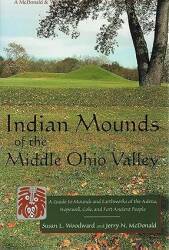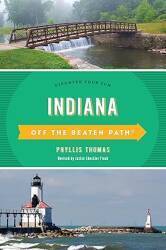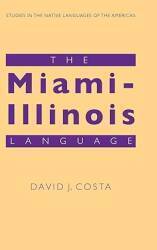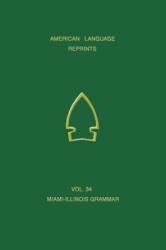
Waapaahšiki Siipiiwi Mounds
Waapaahšiki Siipiiwi Mound Historical Park
39.203906° N
87.563196° W
The Waapaahšiki Piipiiwi Mounds
Historical Park
is a relatively new park showcasing prehistoric earthworks.
It's at 9098 West County Road 825 North
near the small unincorporated community of Fairbanks
in Sullivan County, Indiana.
That community was named for the leader of a platoon of
twelve soldiers ambushed and killed by the local native
people in September, 1812.
The park has nice facilities for a family or large group
picnic and other activities.
Drum ceremonies are held here regularly, to celebrate a
wedding, a special event, or the memory of a loved one.
There are some art pieces,
and some historical descriptions.
The native people called the nearby large river Waapaahšiki Siipiiwi, with waapaahšiki meaning "shining white" or "bright and shiny". The French traders who were the first Europeans to enter the area spelled that Ouabache. Then when the Anglo-Americas arrived, they spelled the French name Wabash.
The local people were of the Myaamia nation, called Miami in English. They spoke an Algonquian language. In this area it was Myaamia or Irenwa, called Miami-Illinois by the Europeans. Miami University in Ohio now has a language revitalization program.
This mounds at this park had burial and ceremonial uses in the Woodland Period into the time of the Mississippian Culture, from 500 to 1650 CE, ending before European contact.
The French came into the Wabash area in the latter half of the 17th century. Today the Wabash is considered a tributary of the Ohio river, but back then it was the other way around — the Wabash was considered the main river with the Ohio as its tributary.
An 8-mile portage between the headwaters of the Wabash and the Maumee river made for a connection between Lake Erie and the Gulf of Mexico. The Wabash was an important trade route. Until the late 19th century, the Wabash was navigable by large steamships as far north as Terre Haute. After that, erosion due to farming had washed soil into the river and made it impassible to shipping.
About half of the Miami people remained in their historic territory in today's Indiana, the other half were forced to relocate to today's Oklahoma.
In 1973 the Glenn A. Black Laboratory of Archaeology at Indiana University in Bloomington first reported this site. They recovered a scraper, a hammer stone, a milling stone, and cracked rocks, but nothing to indicate the cultural use of the site. They collected 420 artifacts, but 326 have been classified as historic, dating from 1858 and later.
Only 23 objects could be conclusively identified as prehistoric, and all were lithic flakes and possible tools.
In the fall of 2007, the Sullian County American Indian Council contacted the Indiana–Michican Power Company, the owner of this land, to discuss protecting and preserving the two mounds here.

In 2008, a partnership was established with Indiana University to research the local oral history of the indigenous people in this area.
In 2011, Indiana University requested an excavation permit from the Indiana Department of Natural Resources, Division of Historic Preservation and Archaeology. The plan was to survey and investigate the mounds, now referred to as the Matheson site (12Su61) and the Coleman site (12Su62).
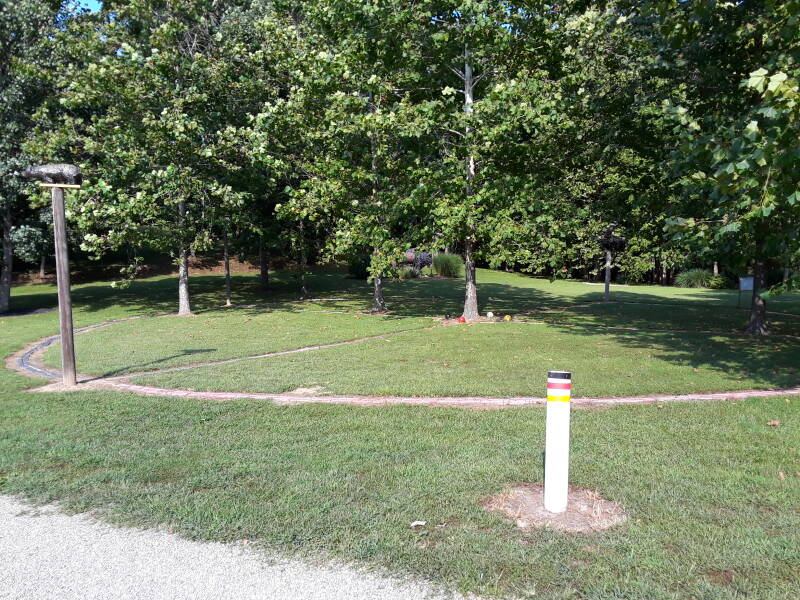
There is a carved Spirit Tree as you enter a wooded area.
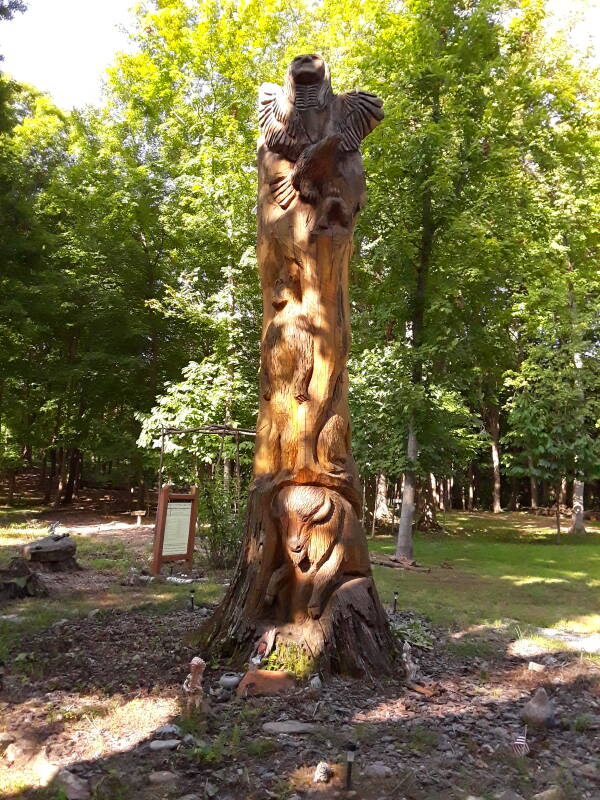
A short path leads past some signs explaining cultural and personal tenets.
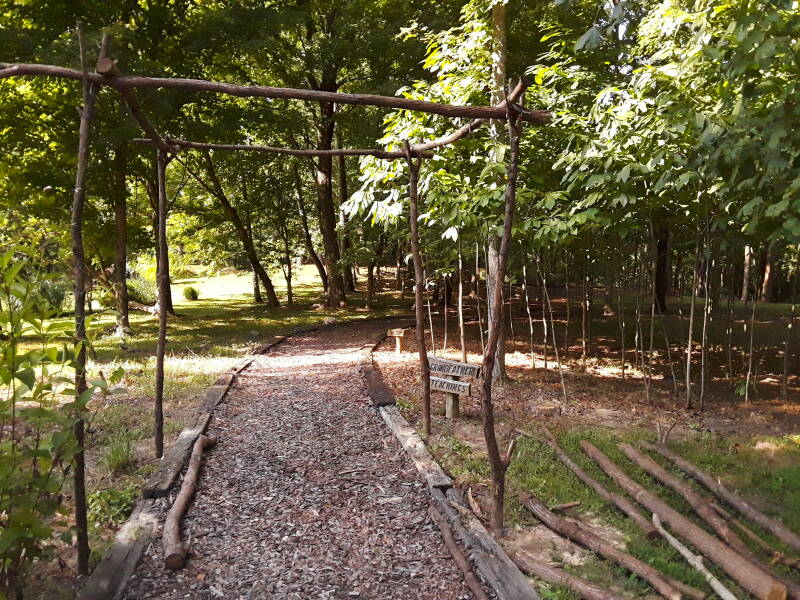
The larger of the two mounds is in the main park area on the north side of the road.

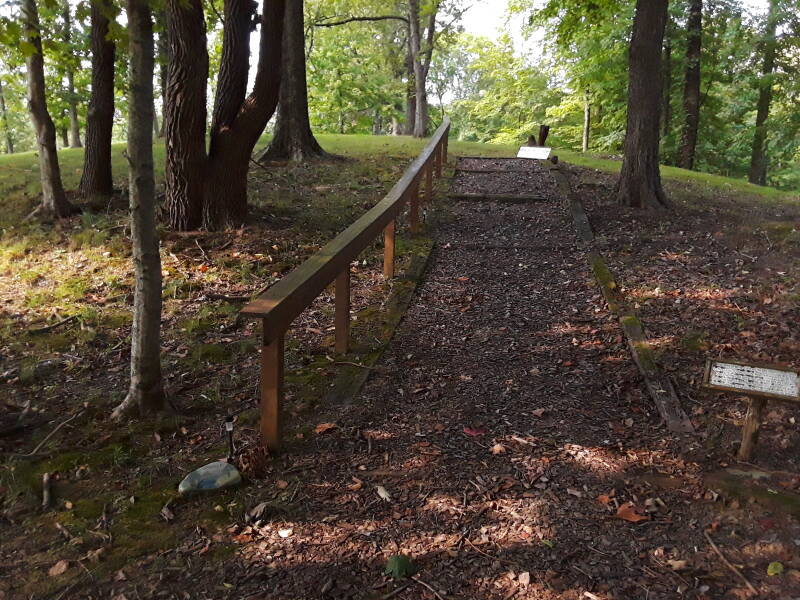

A smaller mound is across the road, on its south side.

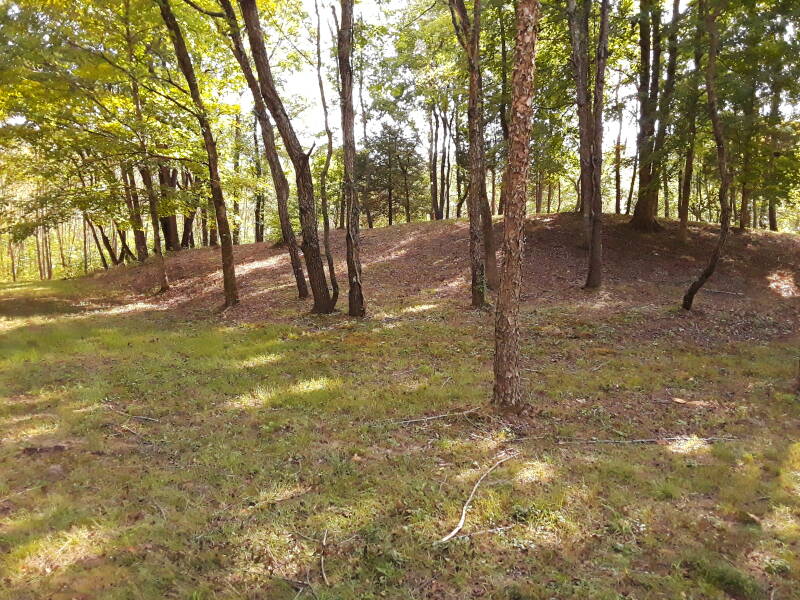
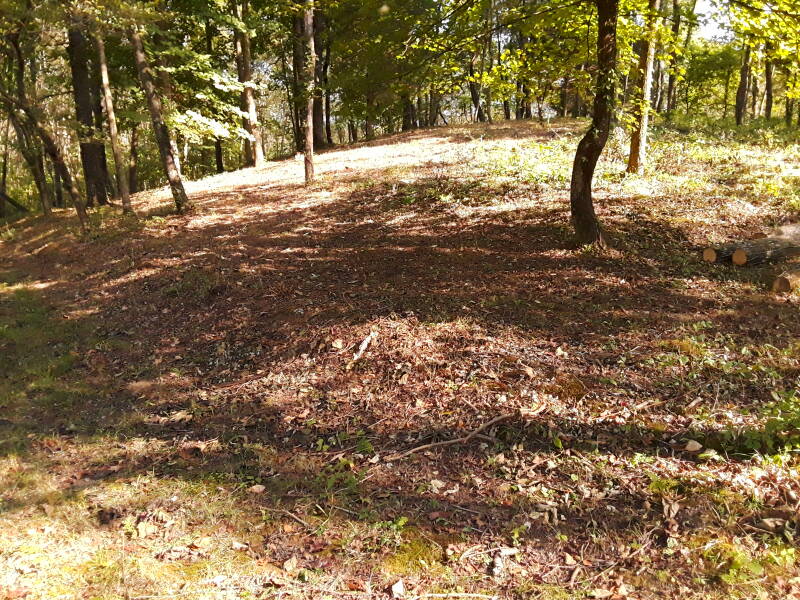
The Great White Bear or the Spirit Bear was made white by the creator of the universe to remind people of the distant past, the time of the ice age.
This statue of the Spirit of the Bear was made by John Fleetwood, Jim Roberts, and Hugh Oxendine.

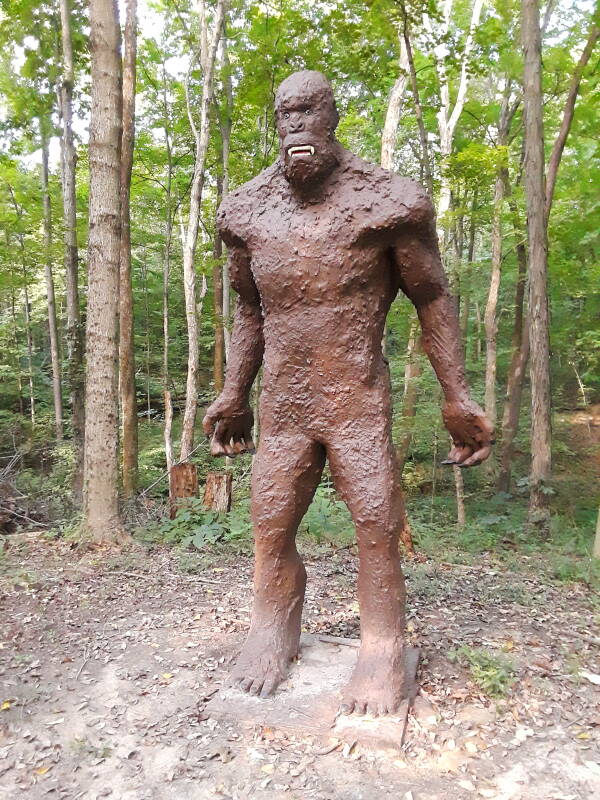
Bug-way-jinini, also known as Wildman or Bigfoot, is the Spirit Keeper of the Woods. This statue was made by John Fleetwood and Hugh Oxendine.
